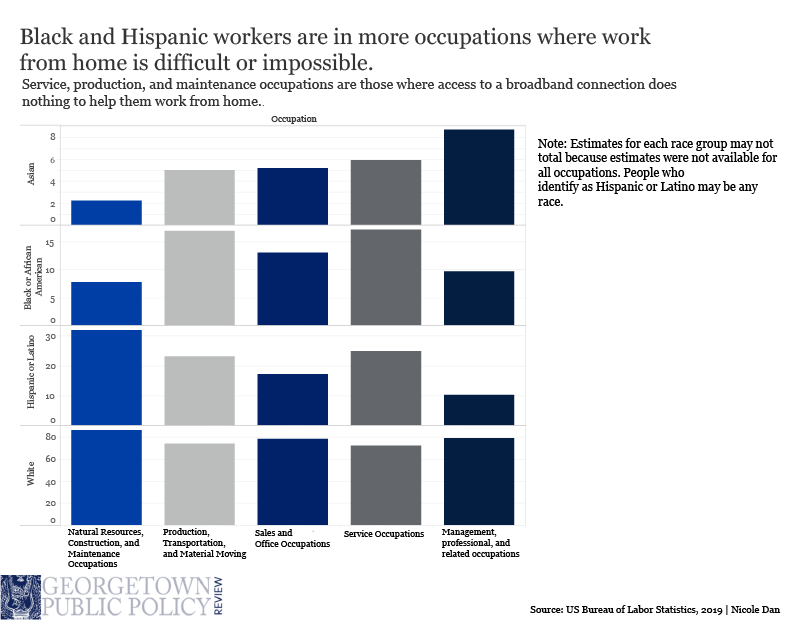The spread of the novel coronavirus has further exposed the digital divide, putting an emphasis on moving work and school online. The digital divide is the distinction between people who have access to technology and internet access, and those who do not. People who have technology and broadband may be able to keep up with online classes or work, while lacking these resources may still leave many behind. With social distancing rules in place, one of the only ways to engage with school and work safely is to use the internet, although quality internet may still be lacking for many in the U.S.
One of the major divides in the workforce is between service and maintenance jobs as opposed to office work. To be able to do your work from home is a privilege, afforded to the kind of work that depends on email and phone calls, not interacting with strangers face to face throughout the day. Working at a restaurant or a grocery store cannot be done from home. Often, these are also the jobs that are deemed essential and partly exempt from business closures. According to the Bureau of Labor Statistics, Black and Hispanic workers make up more of the occupations where working from home is either difficult or impossible (see graph below). This means, if workers in these occupations haven’t been laid off already, they may face more exposure to the virus than other types of jobs.

The United States still has a broad range of both broadband connectivity and average speed, which doesn’t break down neatly by income. States with high median incomes, like New Jersey, Massachusetts, and Connecticut have some of the highest speeds and broadband coverage, but there are still some outliers. States like Florida and Pennsylvania, with lower median household incomes than Hawaii, California, or Alaska, have higher average speed and broadband coverage (see graph below).

According to BroadbandNow.com, 25 Mbps is considered the minimum speed for modern households – however this might be inadequate with the new reality of multiple family members streaming, learning, and working on one network. Montana, Maine, and Vermont all fall below this standard.
Broadband coverage is somewhat consistent, but average speed ranges anywhere from 20.3 Mbps to 52 Mbps. This means that someone using the internet in a state like Texas, with one of the highest average speeds, is probably having a much different experience from someone logging on from Montana or Maine. A quality internet connection can bring social connection, opportunity, and entertainment. This could have consequences for learning and working during the time of coronavirus and beyond – with students from states where broadband is slow or inaccessible unable to even faintly mimic an in-classroom experience where they can see their teachers.
